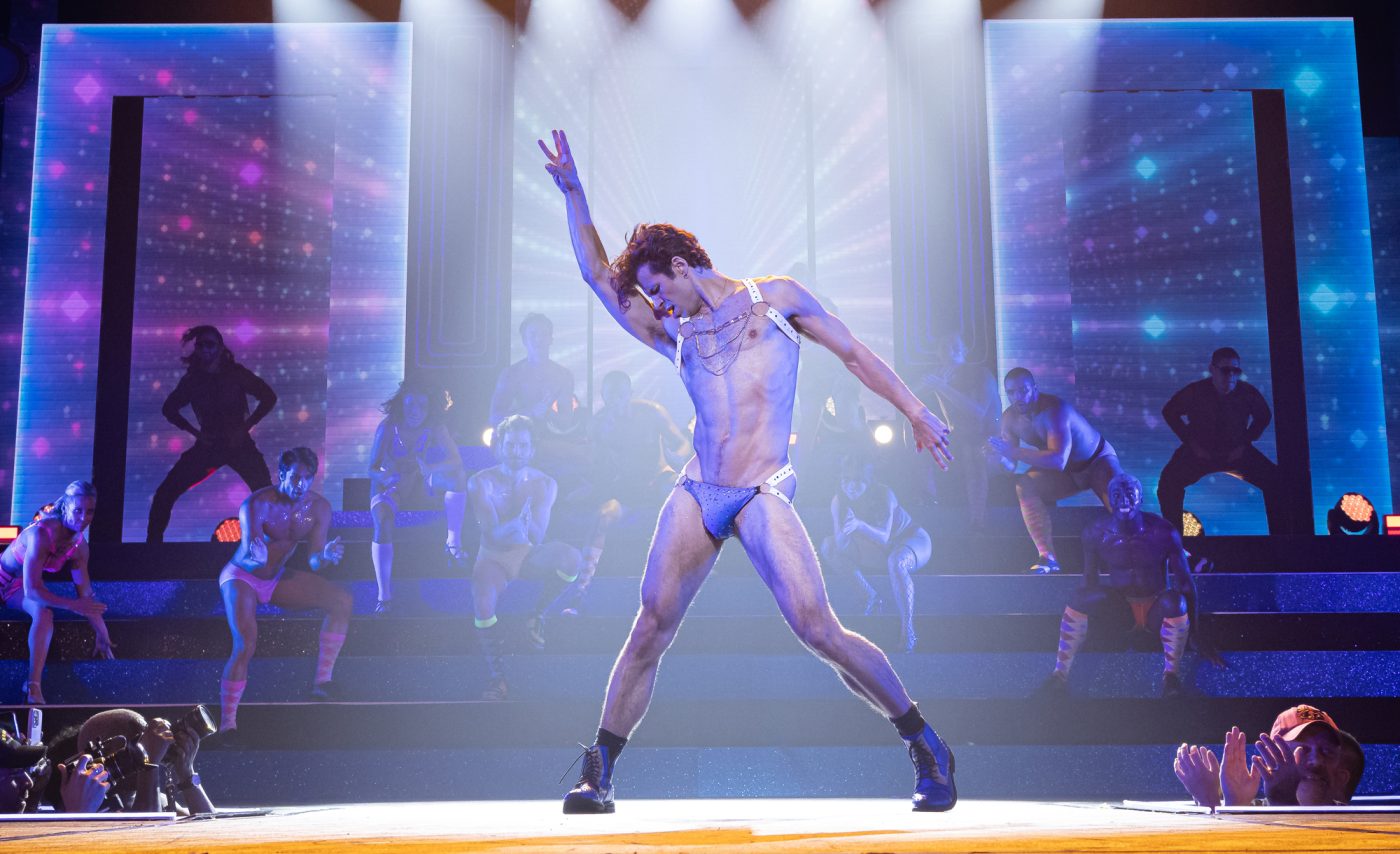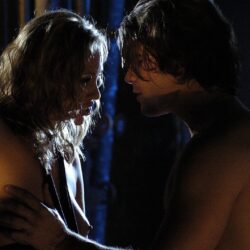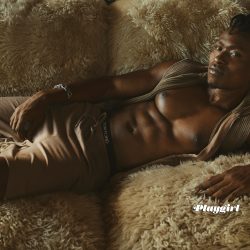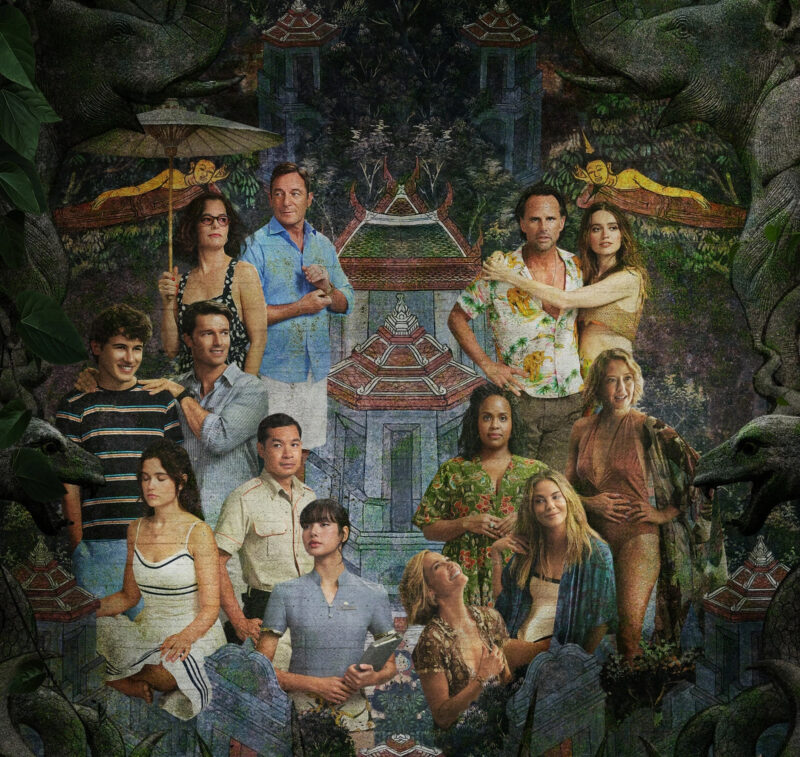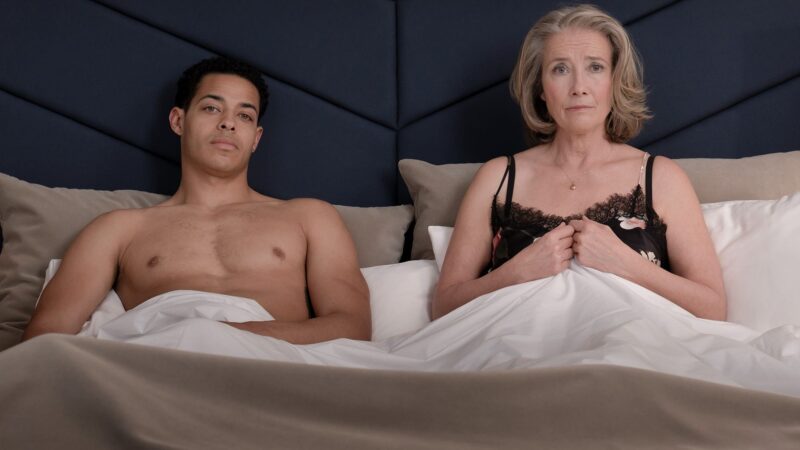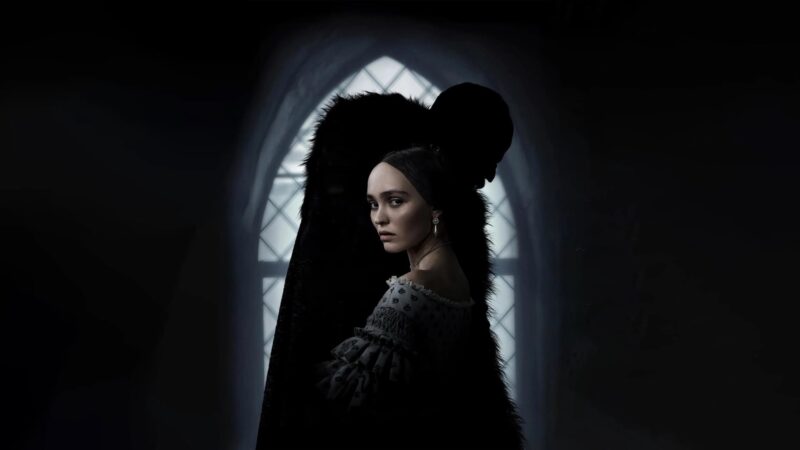Historically speaking, when would you say the male “Broadway Body” as an object of desire first appeared?
While male chorus dancers’ bodies were long objects of desire, the so-called Broadway Body emerged in the mid to late 1970s thanks to Gay Liberation and burgeoning fitness culture. The photographs of Ken Duncan capture this era in sensual photographs of Broadway dancers displaying their bodies in various states of undress.
Where did Duncan publish these photographs?
Many ended up in After Dark magazine, which was a nightlife magazine that was popular among gays from the early 1970s on.
Is there anyone famous to be seen in the pictures?
Duncan also photographed celebrities. He did a series called “Broadway Buns” in the early 80s with dancers from Cats and A Chorus Line, Dancin’, 42nd Street, Fame, and Seven Brides for Seven Brothers. He didn’t just do the artistic nudes of dancers, but I think that his work was at the forefront of eroticizing dancers’ bodies at this time.
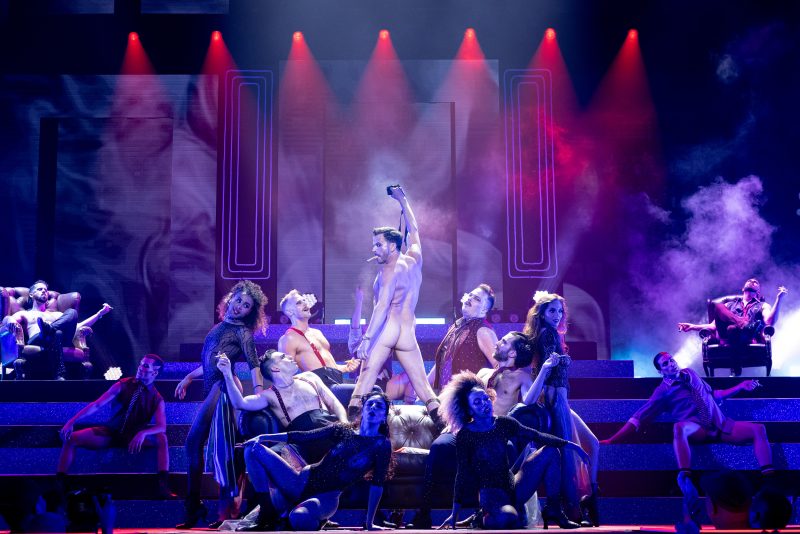
Broadway Bares 2024 • Smoke Show, Nick Kenkel • photo by Michael Hull.
How is the eroticized Broadway body different to, let’s say, strippers or porn stars?
The context matters – it’s about which professions are valued in American society. A Broadway dancer or a ballet dancer, whose bodies approach some ideal physique, is seen differently than someone with a similar body who does sex work. Stripping doesn’t have the same cultural capital as somebody who’s worked as a performer on a legitimate theatrical stage. And of course, porn was looked down upon by American society for a long time despite its actual popularity.
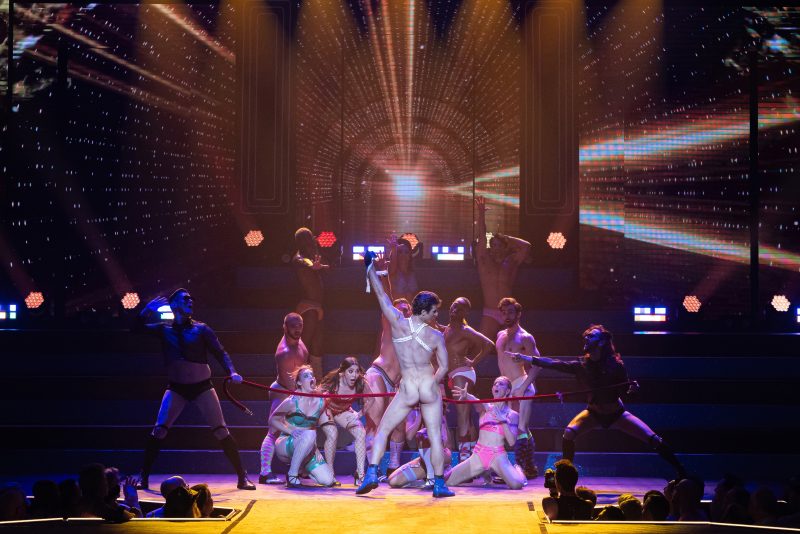
Broadway Bares 2024 • The King, Michael Graceffa • photo by Michael Hull.
Today we have events such as Broadway Bares, an annual show where you see a lot of hot bodies on display.
Broadway Bares started in 1992 as a fundraiser for people with HIV/AIDS. It’s always been a celebration of hot bodies and sex and sexuality and queer sexuality. It began when Jerry Mitchell was in The Will Rogers Follies on Broadway and wanted to do something to raise money for AIDS awareness and AIDS services. Actually, it’s an interesting overlap between the Broadway world and stripping, because it’s an event where all of the dancers perform stripteases. Occasionally, at the end of the night, some in the audience can get a little handsy with some of the dancers as they work the front of the stage for tips (for the charity). There is that kind of participatory environment that strip clubs have.
Is it just gay men participating, or are there women too?
It’s pretty mixed. And there are a lot of women in the show, too. Broadway Bares celebrates all kinds of sexuality joyfully. Sometimes it’s really sensual, sometimes it’s funny. It’s all very theatrical – sometimes the six pack abs you see are actually just body paint. The show’s tease starts in its marketing, which displays the dancers’ Broadway Bodies as objects of desire. Sex sells. And they’re really trying to get you in the door by promising the hottest bodies of dancers on Broadway.
What would you say differentiates these bodies from, let’s say, Magic Mike?
There is a certain overlap between dancers who do Magic Mike kind of shows and people who do Broadway shows. But it’s probably not something they would want to talk about. In the Magic Mike movies we see bodies with an exaggerated muscularity, whereas on Broadway you don’t tend to see too much of that bodybuilder physique. On Broadway, the performers still have to be able to do the choreography. And the aesthetic of the Broadway Body, even though it has become much more muscular than it was in the 1970s, is less bulky than a body builder’s because the muscles can’t be getting in the way of the dancer’s line.

Broadway Bares 2024 • Bachelor Party • photo by Michael Hull.
You mentioned that the emergence of the male Broadway Body occurred in the ‘70s, but I remember reading in John Clum’s book Something for the Boys that the chorus boys back in the ’40s and ’50s were an erotic attraction (for gay audiences). So, this phenomenon must have been around for longer.
From at least the 19th century on and probably much earlier, dancers were erotic figures for a lot of audiences. We know from histories of ballet that patrons of the ballet would go backstage at the Paris Opéra and expect a certain kind of access to the female corp de ballet dancers especially. In terms of erotic attraction for gay Broadway spectators, it’s hard to say definitively, since almost everyone was publicly closeted at the time. And anything that happened would have been underground or furtive. Although, as John Clum writes in his book, it was very normal to be a gay male dancer in a Broadway show. Broadway was rife with homosexuals back then, as it remains today. And social standards of dress and sexuality were so different that they wouldn’t have displayed their bodies in the same way as today and when they did, they carried different meanings because the context was different. Even in musicals like Li’l Abner (1956), which featured a subplot about the bodybuilder physique, they wore these enormous (to 21st century eyes) get-ups that weren’t the little skimpy thongs you’d see on the Magic Mike dancers.
Back in the early 20th century, Florenz Ziegfeld took on the German bodybuilder Eugen Sandow as his first client and presented him – half nude – to his wealthy female patrons. They reportedly fainted when they were allowed to touch him. Later, in the 1920s, there are film clips of the famous Ziegfeld Follies where you see nude men in the tableau vivant scenes, in the midst of all the nude female dancers. So, Ziegfeld realized how important male nudity was to keep his (female) audiences happy.
Yes, that’s fascinating. Ziegfeld understood that the display of the body would draw audiences in. I think as we see different sexual revolutions happen – the 1920s, the ’70s, the ’90s – we see standards shift in response. The Ziegfeld Follies from the 1910s into the ’20s were certainly at the forefront of making that visible on stage.
If you are a Broadway performer, you’re usually not on a regular income. How tempting is it that dancers use their Broadway Bodies and go to OnlyFans or anything else?
With the rise of those platforms, we’re seeing more of an overlap. I think that such extra work has long been a temptation for dancers. Today, performers feel more pressure to create their own brand on social media. If they can make six figures on OnlyFans, they don’t need to perform on Broadway, necessarily.
In his book Damn Shame: A Memoir of Desire, Defiance, and Show Tunes David Pevsner discusses how he used his Broadway Body – between show engagements – to hustle in New York City and make extra money, back in the ‘90s and early 2000s. Is that something you’ve encountered more often in your research?
A lot of dancers will be nude models for art classes. I don’t think that many of them actually go into sex work, but I also don’t know that anyone has kept track of this.
If you have the Broadway Body that we’re talking about, it’s usually restricted to a certain age. You can’t sustain that sort of body forever.
Most dancers retire by their early 30s because they need to figure out a career that has more longevity. But you can keep working on your body forever. Some of the fittest people I see around are in their 50s and 60s. But are there Broadway dancers who are in their ’60s? No. There’s a shelf life for dancers, particularly on Broadway, because the eight-shows-per-week schedule is grueling. And once you’re over 35 as a dancer, your body changes and you can’t do what you used to do with ease. I’ve seen people stretch their careers out. But that’s very rare. Most people I know either transition into other careers or they focus on getting acting roles and not being in the chorus. At a certain point, it just doesn’t feel good to put your body through such exhausting work.
What’s the Broadway show with the most famous display of Broadway bodies?
Setting aside the long running revue Oh, Calcutta, which attracted audiences because of its nudity and frank sexuality, I would go back to the 1970s and argue that nobody else displayed Broadway Bodies like director-choreographer Bob Fosse. His early background in burlesque and his blend of highbrow and lowbrow tastes eroticize the dancers in a way that was unique. In particular, there was one number in his show Dancin’ (1978) that was an erotic ballet fantasy that critics hated because they found it tasteless. Fosse had the dancers miming oral sex and stuff like that. He was pushing boundaries of taste. Willa Kim’s costumes really displayed the dancer’s bodies to great effect. They were funny, they were sexy, they were interesting, and exotic. The dancers were wearing art, almost. For me, that’s always more appealing and sexy than just some muscle body dancing in a thong.
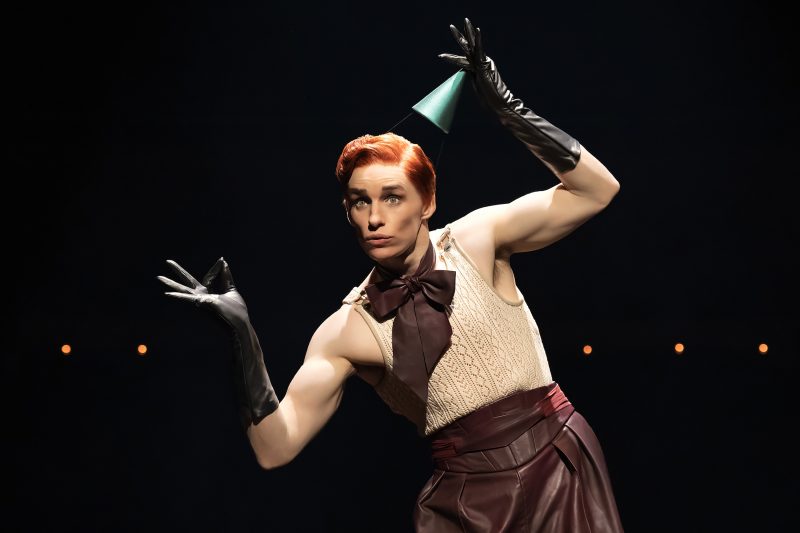
Eddie Redmayne in Cabaret • photo by Marc Brenner.
What are the current shows with eroticized bodies?
The current revival of Cabaret highlights a fantasy of the hypersexual underground world of Weimar Berlin. And just like in Broadway Bares, audience members can get a little too handsy and reach out and touch the dancers at the end of the show. In such an atmosphere the boundaries get a little blurry for some spectators—perhaps due to the amount of alcohol consumption encouraged.
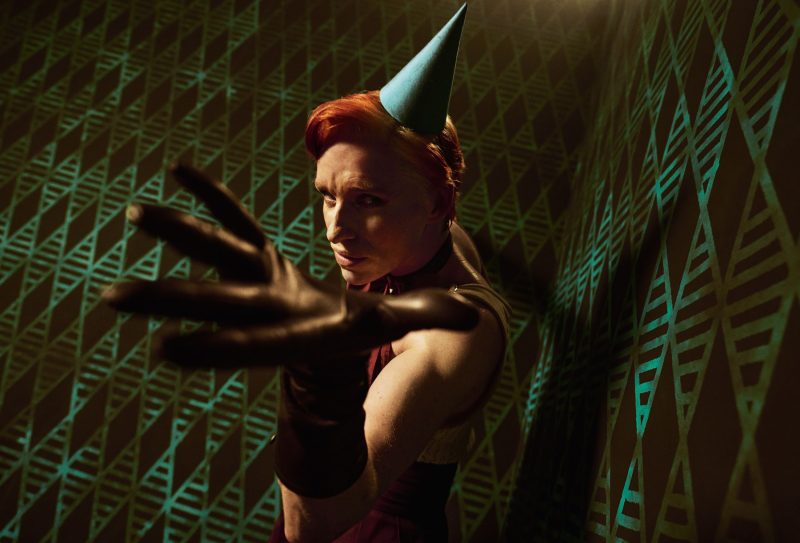
Eddie Redmayne in Cabaret • photo by Mason Poole.
Are the people who get a little handsy female audience members?
I’m not sure. Some see it as a kind of stag night and get completely wild, thinking they own the men or can do anything with them. I read a news story about it recently. The other current Broadway show with many eroticized bodies on display in Chicago. It’s been running in this revival version since 1996. Those costumes by William Ivey Long have always been really sexy. I remember seeing that production when it opened and hearing people in the audience around me gasp and openly talk about one dancer’s hairy pecs. That show, on stage and in its marketing, has really invited an erotic gaze to look at the dancer’s bodies.
Does the Kander & Ebb score highlight this raw erotic allure?
I can’t argue with that.
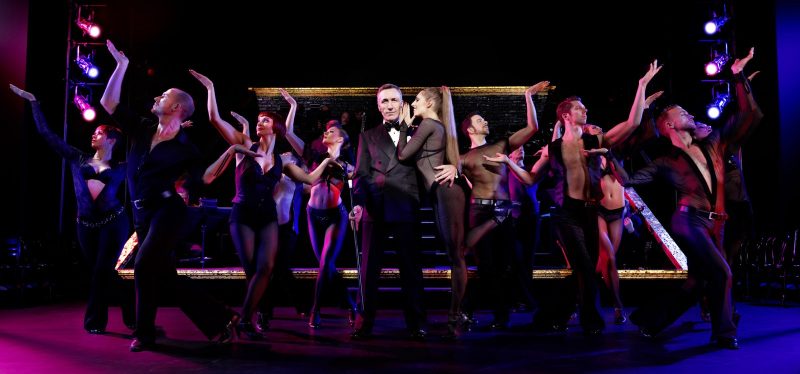
Chicago, Stuttgart • photo by Stage Entertainment.
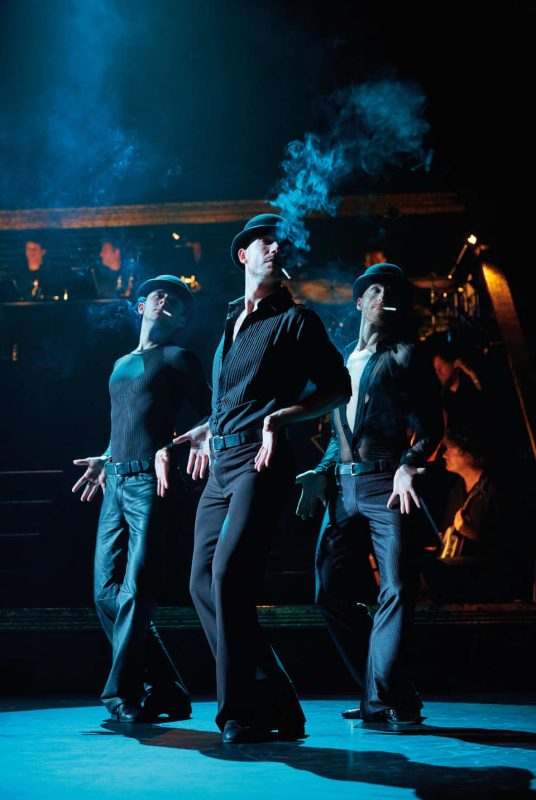
Chicago, Stuttgart • photo by Stage Entertainment.

